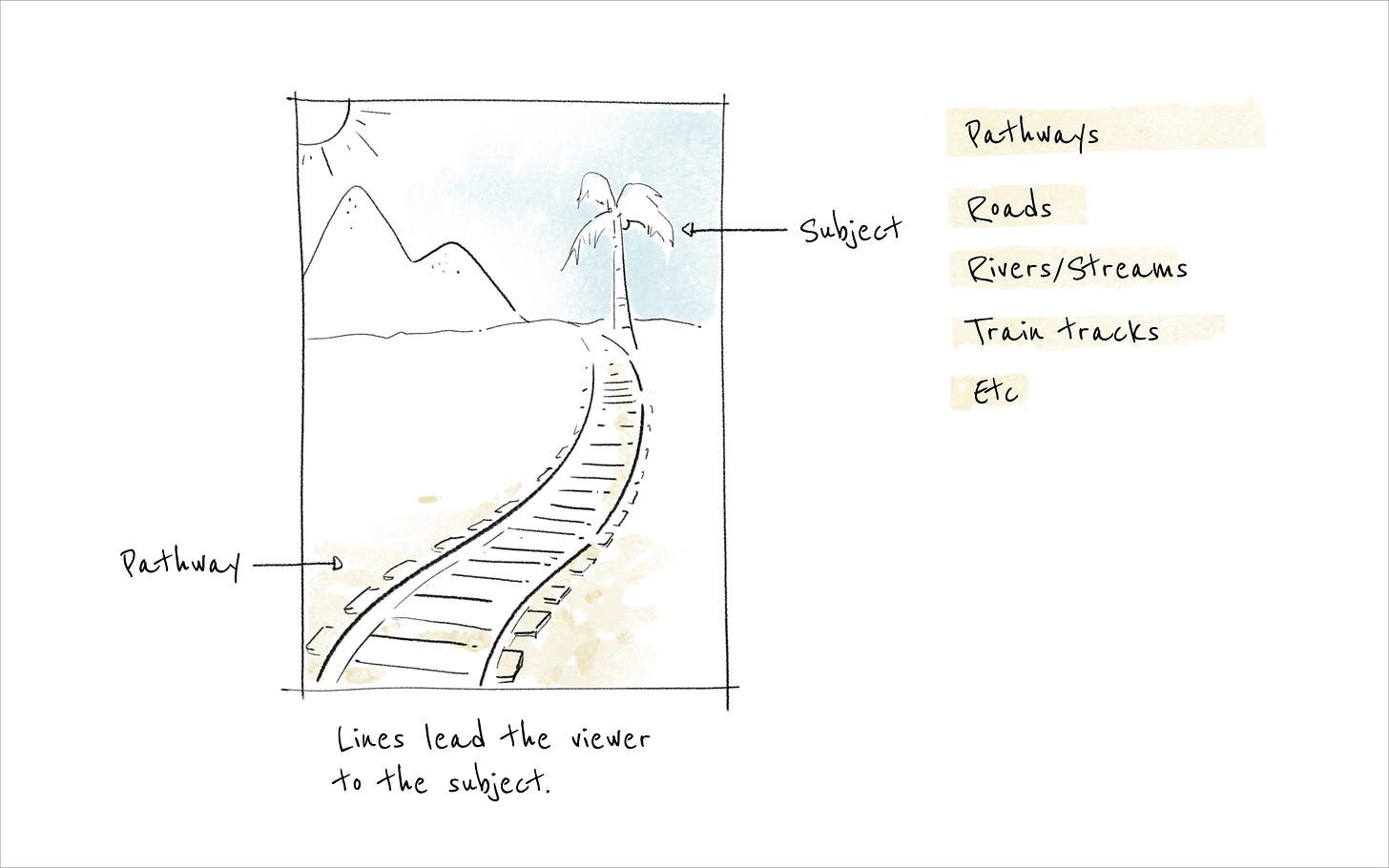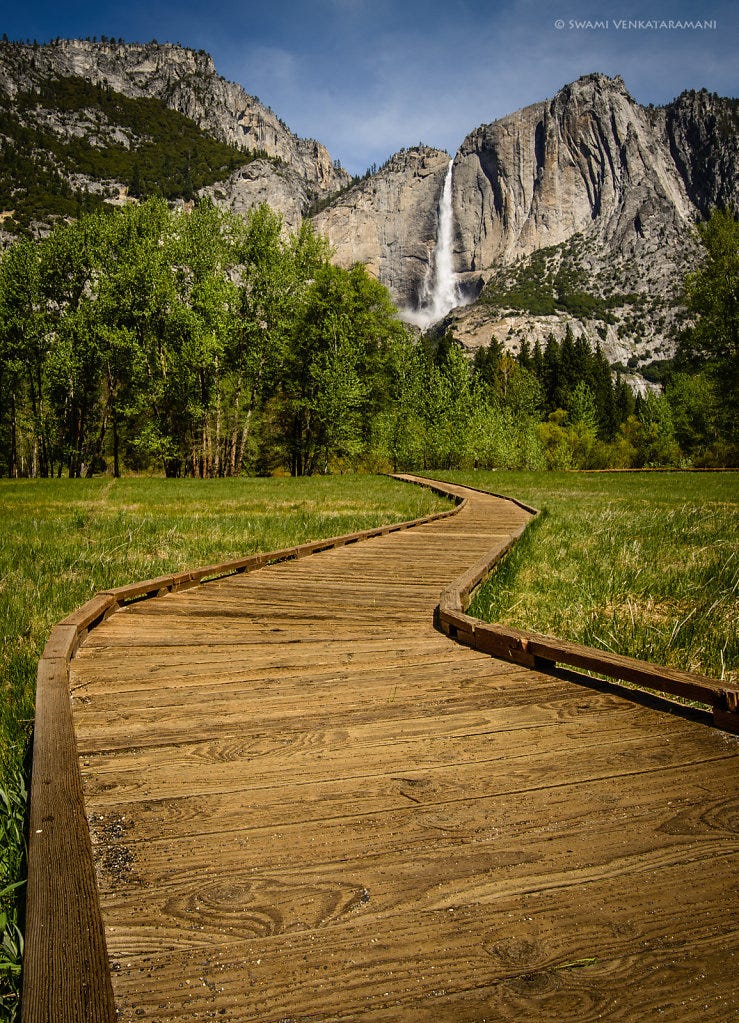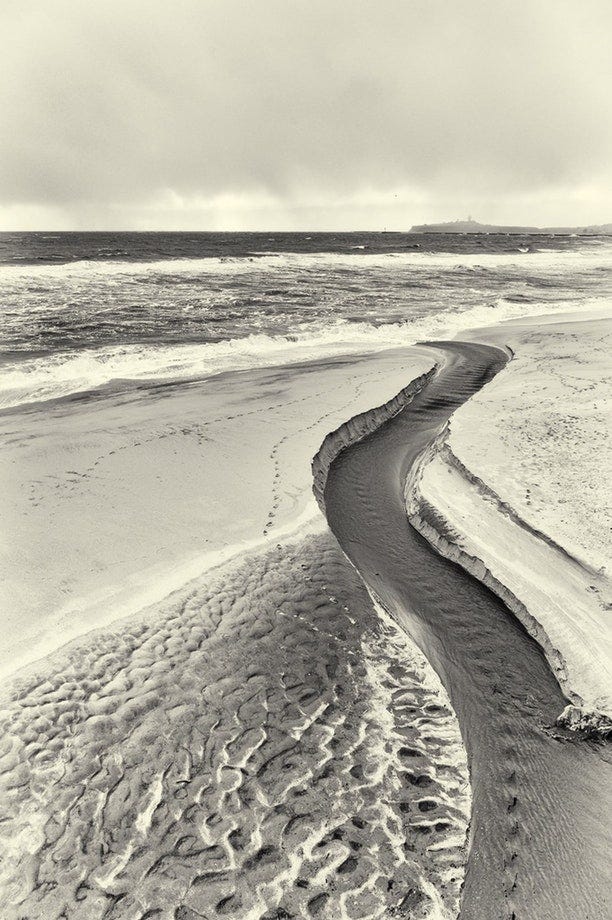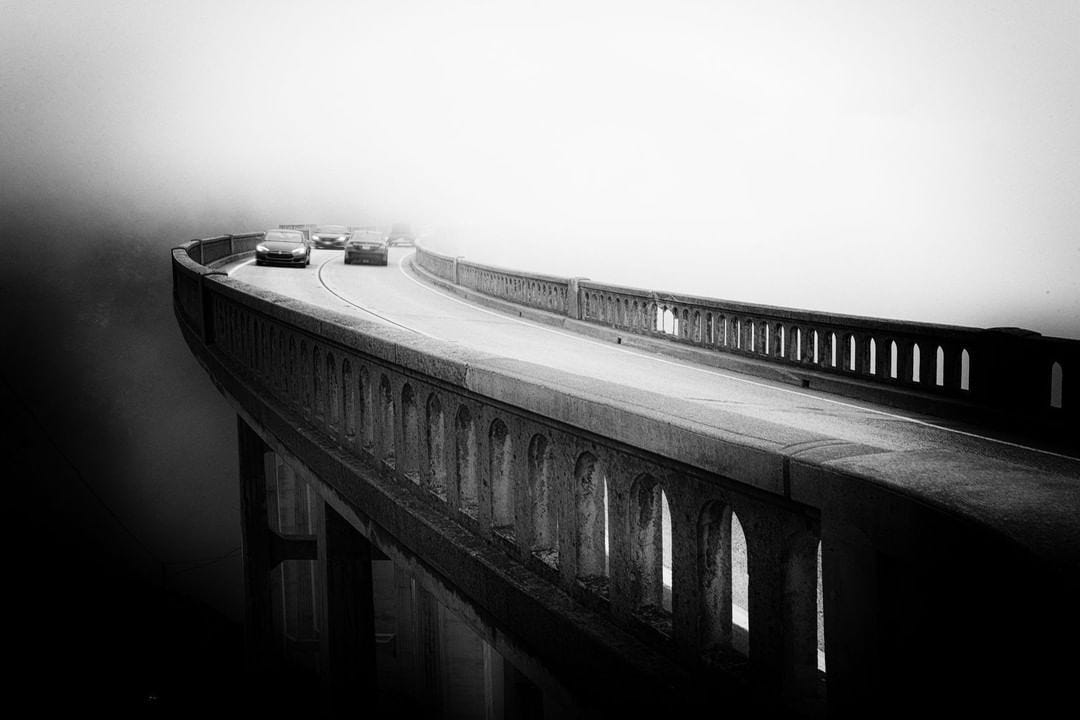Leading Lines
Last time, we saw what the fundamental problem of photography is—the world is 3D, but your photos are 2D, which is why photos don’t usually do justice to the real scenes. So how do we solve this problem? How do we bring back that lost dimension?
The answer is to incorporate patterns we find in the real world. When you are in front of a beautiful scene, it’s not good enough to just snap a shot of what’s in front of you. You have to look for these patterns in your scene and use them to craft your photo. There are several patterns that photographers look for, and today we’ll talk about a very common pattern: leading lines.
Anytime you see a line in your scene (whether straight or curved), see if you can take advantage of it. Examples might be train tracks, bridges, rivers, streams, pathways, roads…
A leading line in your photo does two things. First, it creates a sense of depth—because typically, a line starts from the edge of the frame and goes into your scene, so it’ll help your viewers to perceive the 3D-ness of the scene.
The second is that a line leads your viewer’s eyes through the frame. For example, you might place your main subject at the end of the line, making it easy for them to understand what you’re trying to convey. Or the line could simply move your viewers’ eyes from one part of the frame to another. Or the line could help to distinguish between two different aspects of a scene. There are many ways you can use a line to guide your viewers’ attention. Regardless of how you use it, a line gives your viewers a way to interpret your art, rather than leaving them stranded hunting around for the purpose of your shot.
Here are a few examples from my work:
Your turn: I want to see how you use leading lines in a photo. Shoot a picture with a leading line and share it with me. If you don’t practice, this lesson is worthless.
Next few lessons, we’ll look at other visual patterns that photographers look for.






